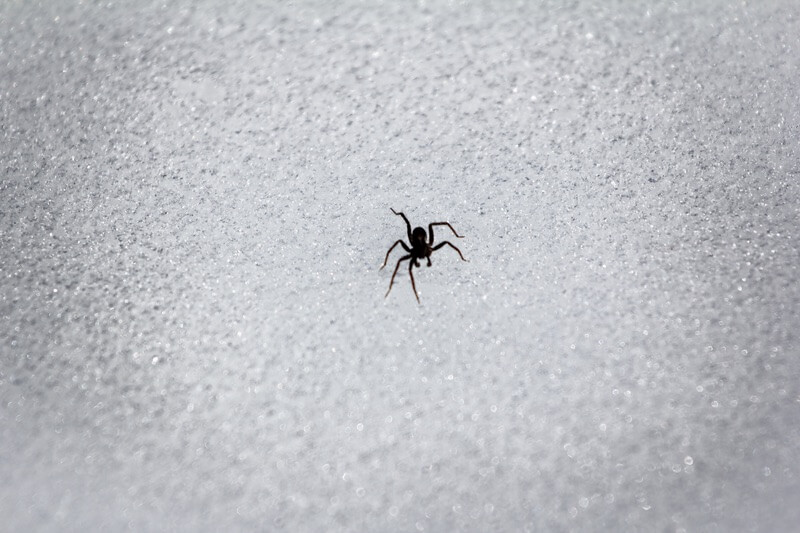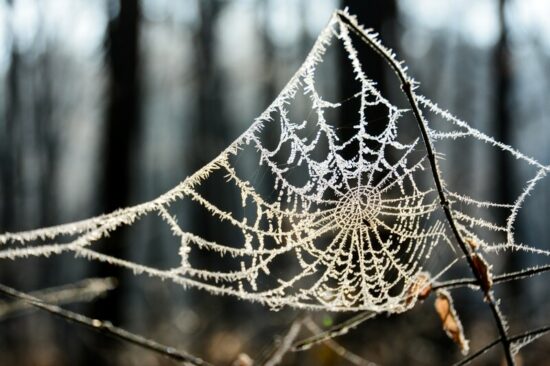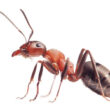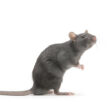Many homeowners don’t know if spiders like the cold or if they die in the winter. Interestingly enough, the answer isn’t obvious!
This guide will help you understand how spiders survive in the cold, and how they behave when it gets chilly.
Table of Contents
Do Spiders Like The Cold & Can They Survive?
Spiders are interesting little creatures with tons of unpredictable behaviors. Most people associate these pests with the summertime heat. They seem to come out in droves during the warmer months, making many assume that they can’t tolerate the cold.
However, the truth isn’t as straightforward.
Spiders don’t particularly like the cold, but they don’t enjoy the heat either. The belief that spiders prefer warm weather is a myth. The truth is that spiders are ectothermic.
Ectothermic bugs and animals will change their body temperature based on their surroundings. That shows just how adaptable spiders can be! They don’t need a specific temperature range to survive, and many species will simply adjust their way of life to accommodate the changing weather.
When it gets cold out, spiders might bask in the sun or find areas of heat. Meanwhile, you might see a spider hiding in the shadows to cool off when things get warm. It all depends on the environment.
Another critical thing to remember is that thousands of spider and arachnid species exist. Even the common household variants you see might be one common species in a family of thousands.
There is far too much variety to say that all spiders live a specific way or have particular preferences. Some are more adaptable than others, and each variant has undergone its evolutionary processes to handle temperature changes.
For the most part, spiders can survive in the cold. They don’t necessarily enjoy the climate dip, but they are fully capable of surviving harsher conditions to a certain extent.
Do Spiders Die In The Winter?
The answer to this question is a little hazy. It’s true that some spiders die in the winter. However, others can thrive and adjust their lifestyles to make it to the warmer season.
Spiders have a few different biological processes that help them survive. Not all spiders have these abilities, but the ones you might encounter in your home likely do.
Like many other living creatures, spiders will slow down as the temperature drops in the winter. The cooler weather affects metabolic processes in the body, giving the arachnid no choice but to conserve energy. This decline usually happens when temperatures are consistently 50 degrees Fahrenheit or lower.

Spiders usually thrive most in warmer temperatures around 70°F. They burn through energy just fine and don’t have to worry about conservation.
Come winter, and things are different. Below 50 degrees, the spider becomes far less active. Their movements get downright sluggish, and some will begin to seek shelter for the impending winter.
Now, what a spider does moving forward depends on the species.
Some will find shelter and create a form of natural insulation to stay safe (more on that soon). Others will hibernate. The process isn’t exactly like bears in the winter, but the mechanics are all there. The hibernating species effectively shut down for the winter in order to survive. They’re still alive and capable of taking action to stay safe, but they rarely move as they conserve energy.
Expert Tip: Generally, hibernating varieties will go to great lengths to build an energy supply before it gets cold. For example, it might catch more prey and feed more often to last through the winter. It’s just like a hibernating mammal.
For those spider species that don’t hibernate, cold hardening is usually how they survive the winter. Cold hardening is a fascinating biological process that helps these creatures survive temperatures below-freezing temperatures. Typically, the survival threshold is around 23 degrees Fahrenheit, which is more than enough for most spiders.
As the temperature falls, these spiders will slow down and immediately seek shelter. Then, they produce a chemical in their bodies. The chemical is glycerol. It’s similar to the chemicals in antifreeze that you use in your car.
The chemical helps lower the freezing point of their body fluids, allowing the spider to survive far harsher conditions than it usually would.
Generally, spiders survive the winter and cold by combining survival methods. In addition to cold hardening, they’ll stay in a safe spot that offers ample shelter.
Where Do Spiders Go In The Winter?
Here’s the million-dollar question that many people get wrong! Contrary to popular belief, spiders don’t always go inside your house to survive the winter cold.
There are a few exceptions, such as the brown recluse. But most of the spiders you encounter at home haven’t moved anywhere!
You see, the spiders in your house have likely adapted to life indoors. Spiders have cohabitated with humans since the beginning of time, and these variants evolved so much that they’re practically incapable of living anywhere but the shelter of the home. Of course, they can handle migrations to get into homes in the first place.
But once they settle down and establish a colony, generations of spiders will never leave the shelter of your house. That means the spiders you encounter in your home have likely lived there all their lives. If you see them during the winter, they’re not migrants that came inside to find warmth. They’re long-time inhabitants you’re just now seeing!
Expert Tip: Believe it or not, very few spiders will seek warmth as the primary reason to enter your home. They come into houses for many different reasons. Food is often the biggest attraction, but heat is not one of them.
Spiders are cold-blooded. Heat sources aren’t something they actively seek. As mentioned earlier, they might adjust their lifestyle to accommodate weather and ambient temperature changes. The eight-legged pests are not as affected by the cold and heat as many people think.
When it starts to get cold, spiders will often look for shelter as opposed to warmth. They’ll go to small cracks, gaps, and voids with very little exposure to the elements. Some even find solace under rocks, leaves, and old trees.
But that’s not all. Some spiders go a step further to create more insulation.
Several species will create structures akin to egg sacs. The webbing creates an excellent barrier that shelters the spider from the cold. Many spiders also lay eggs around the fall season.
Once those eggs hatch, the tiny spiders will stay in their egg sacs to weather the cold before emerging in the spring.
Do Spiders Like Cold Rooms?
Spiders have no preference either way. It’s a myth that spiders seek out warm structures for the winter.
As we said earlier, these cold-blooded creatures don’t actively pursue heat. They can survive temperatures between 23 and 110 degrees Fahrenheit.
The furthest they’ll go is seeking physical protection. That includes small cracks in the walls, holes in the floor, or natural cavities in rocks and trees. Those small hiding places are perfect for weathering the cold.
However, spiders don’t seek them out because they’re warmer. In all likelihood, it’s to stay safe as they hibernate or go through the cold-hardening process. Spiders are pretty vulnerable during the winter, so those protected spots can make a difference in winter survival.
Spiders don’t like cold rooms, but they don’t prefer warm ones either. The main priority is survival, and these pests will go wherever they feel safest.
Conclusion
As you can see, spiders have a number of ways they can survive in the winter. While they don’t like the cold, they don’t mind it either. These critters simply adapt!
If you’re having some issues with spiders in the winter and you’re not sure where to turn, send us a message. We’ll gladly give you a hand.


